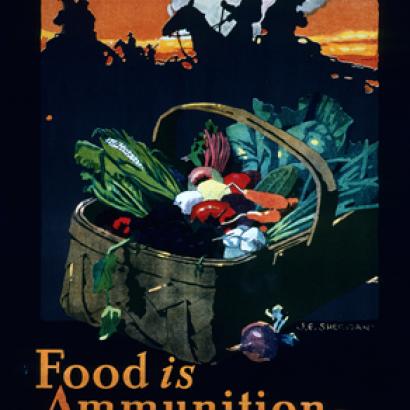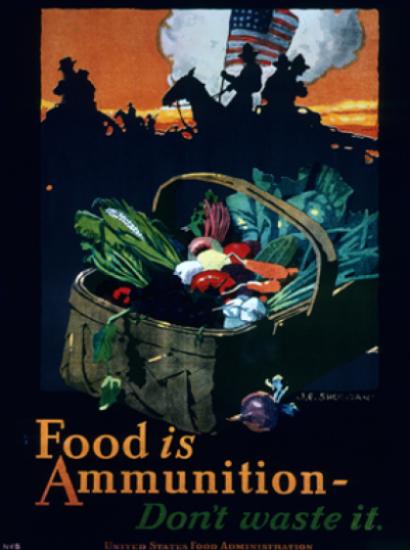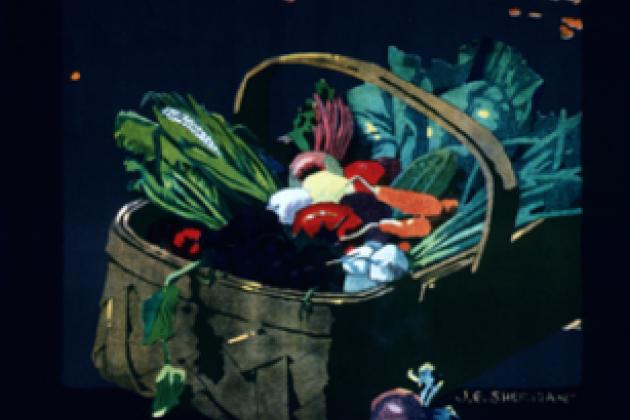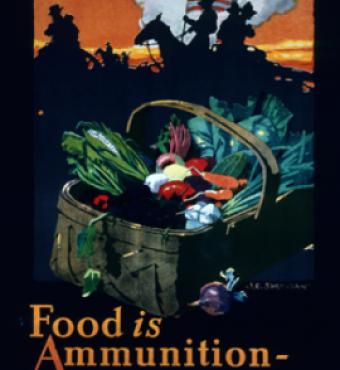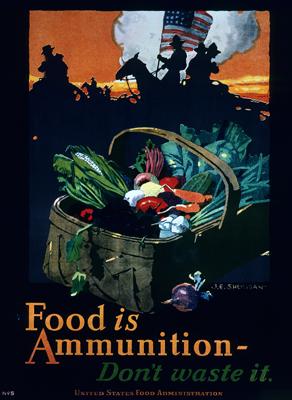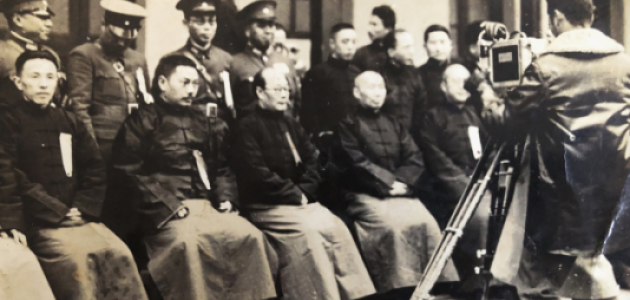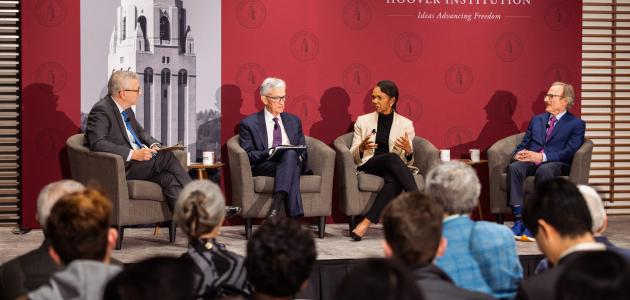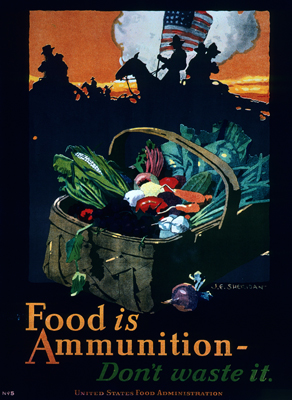
As one of the most famous political posters from the Hoover Institution’s World War I archive reminds us, in wartime “Food Is Ammunition.” Throughout the twentieth century, food shortages and rationing have been prominent features of total war; that is, war that affects civilians as well as professional armies. In the First World War, Herbert Hoover’s work with such organizations as the Committee for Relief in Belgium, the U.S. Food Administration, and the American Relief Administration established precedents for large-scale efforts aimed at diminishing the effects of starvation-inducing naval or economic blockades of food and supplies. As the most recent World Food Organization relief efforts in Syria remind us, the threat of starvation remains a harrowing weapon of modern war.
Last month Dr. Mary Cox, an economic historian at All Souls College, Oxford University, who will be a visiting fellow at the Hoover Institution in the 2015-16 academic year, published a revealing study of the effects of malnutrition on German schoolchildren between 1914 and 1924. “Hunger Games: Or How the Allied Blockade in the First World War Deprived German Children of Nutrition and Allied Food Aid Subsequently Saved Them,” published in the spring edition of the Economic History Review, draws on newly discovered archival records to explore the lasting effects of the war and Allied shipping embargo on a generation of German schoolchildren who frequently went hungry in the war and postwar years. Her article also explores the effects of Herbert Hoover’s relief efforts: “Hoover’s diligence in working with different political and religious groups and with wealthy Americans, as well as his personal tenacity and direct contributions in securing funds for German children, was nothing short of heroic” (624). Cox concludes that, during the post–World War I period, “The ability of former belligerents to work together after an exceptionally bitter war to feed impoverished children may hold hope for the future.”
Cox recently shared her insights regarding the formulation of her article and findings:
“During the First World War the Allies initiated a blockade against Germany that included food and fertilizer. Germans asserted that women and children suffered significant nutritional deprivation during the war due to this blockade, but many have dismissed these claims. An unbiased assessment of the nutritional status of noncombatants in Germany, during and immediately following the First World War, has not been easy to obtain. One American, Herbert Hoover, was sufficiently moved by German assertions of hunger that he mobilized a massive food effort to feed Germany as an armistice was being negotiated and continued these efforts afterward, into the early 1920s. ‘I don’t have any German enemies under the age of six,’ he proclaimed, as part of his effort to engender sympathy. But were living conditions that bad, and were Hoover’s efforts successful?
“To reconstruct the nutritional status of German civilians a century ago, different sources are useful, including personal letters, diaries, newspaper articles, government documents and pamphlets, photographs, drawings, and films.
“An objective source of information comes from measurements of schoolchildren's heights and weights that I discovered buried in a German archive. I suspected that records containing the physical measurements of the weights and heights of children from the First World War might yet remain, and searched many archives across Germany, but found very little information. It was not until two weeks before my planned return to Oxford that I stumbled across the record of nearly 600,000 schoolchildren who had had their measurements taken from 1914 to 1924 in the library and archive of the Deutsches-Hygiene Museum in Dresden. In Berlin, I found evidence that the Deutsches-Hygiene Museum had published a book in the early 1920s that contained a very few anthropometric measurements. My hope was to find more. When I inquired at Dresden, I was informed that they regrettably did not have what I needed. Searching through their old card catalogue, however, I hit the jackpot, and I knew it: the data would allow me to look at growth patterns of German children during the war. The sample was large enough that I could be confident in the results. And because schooling had been universal in Germany for some thirty years by that point, it would be representative for all of Germany.
“Child anthropometric measurements are ideal for study as children are particularly sensitive to changes in their environment, including decreases in the food supply. I wanted to see whether or not adverse conditions during the First World War were severe enough to actually to change the shape of their growth patterns. Careful statistical analysis of these records demonstrates that German children were severely deprived nutritionally during the war, yet recovered remarkably after the war due in large measure to international aid pioneered by Herbert Hoover and other philanthropists of his era.
“I am currently writing a book on the nutritional status of women and children in Germany from 1914 to 1924. I was thrilled on my first visit to the Hoover Institution to discover economic reports, correspondence, and personal documents of some of the major contemporary foreign players that assessed living standards in Germany and set up child feeding centers in the aftermath of the war. The Hoover Institution Library & Archives also contain many German reports as well, which were used by the American team then charged with administering food aid. The archives also have a wealth of contemporary posters, photographs, and even film from the era. Some of these sources are not to be found in Germany, perhaps because of bombing during World War II.”




